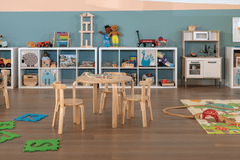
All Blog Posts


Keeping Pace with Change in 2024

Revolutionizing Retail: The Power of Customer Personalization

Celebrating Women's History Month: Insights from Propeller’s Women in Leadership

Navigating the Impacts of AI as a Change Management Leader

Tackling Healthcare Worker Burnout: Understanding Causes and Coaching Resiliency

Q&A With Sunil Kasturi, Propeller’s New CEO

Q&A With Amy Weeden, Propeller Co-Founder and Chief Strategy Officer

Is “Good” Good Enough? 3 Ways to Make Data Analysis More Efficient

Q&A With David Woltze, Bay Area Managing Director

Q&A With Bryan Rogers, Vice President of Growth

Q&A With AJ Oberland, Propeller's New Vice President of Operations

Q&A With Maura Koehler-Hanlon, Portland Managing Director

Propeller Community Partner Feature: Struggle of Love Foundation

Propeller Community Partner Feature: Rocky Mountain Microfinance Institute

Propeller Community Partner Feature: Path Home

AI in Action: How Top Businesses Shape Their AI Strategy

Understanding the Challenges of Veteran Transitions and Including Them in Your DEI Plan

ERP Implementation Journey: 4 Steps to Success

What to Consider When Choosing a Business Consulting Partner

Change Analytics: Using Data to Guide Change Management Strategy

Are you ready for a learning management system (LMS)?

Assessing Change Maturity

How to Set Team KPIs to Drive Greater Impact
How can we help?
Get in touch with us or check out our services.
